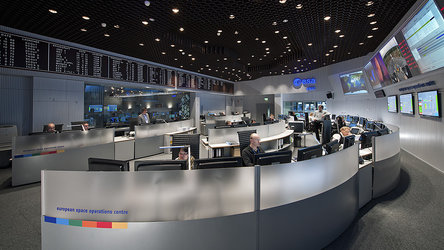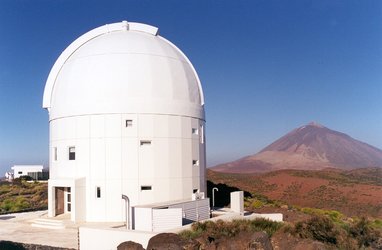European industry develops space safety radar
ESA will boost European industrial expertise by developing a new radar as part of the Agency’s Space Situational Awareness programme. The radar will test future debris monitoring techniques, helping European satellite operators avoid space hazards and increase safety in Earth orbit.
ESA and France’s ONERA – Office National d’Etudes et Recherches Aérospatiales – research centre have signed a €4 million contract that will see the French organisation and five industrial partners in France, Spain and Switzerland design a test surveillance radar and develop a demonstrator model. Work begins this month.
“The agreement significantly increases European industrial competitiveness and capabilities in this field,” says Nicolas Bobrinsky, Head of ESA’s Space Situational Awareness (SSA) Preparatory Programme.

“The new demonstrator radar will help test and validate techniques for observing orbital debris. ESA will benefit from the strong cooperation between French, Spanish and Swiss industry.”
Early debris detection is crucial to help warn satellite operators of collision risks and enable avoidance manoeuvres to be made.
The radar will make use of ‘bistatic’ technology, following an earlier, parallel contract between ESA and Spain's Indra Espacio SA to develop a test radar that uses the ‘monostatic’ approach.
Radars to conduct comparative testing
“Both radar designs will help test and validate techniques for observing orbital debris by conducting comparative testing,” says Gian Maria Pinna, Ground Segment Manager in ESA’s SSA office.
“The two radar demonstrators will be part of an initial complex network of sensors, which will also make use of optical telescopes and data processing centres for observation of debris objects in all orbital regions.
“While radar technology works most efficiently for the detection of objects in low and highly elliptical orbits, optical technology is better for objects in medium and geostationary orbits.”
Radars work by emitting radio energy at a target, and then detecting the reflected signal.
In a monostatic radar, the emitter and the receiver are at the same spot and the energy is emitted in discrete pulses.
In a bistatic radar, the emitter and receiver are set up at separate locations and the energy is emitted continuously.
For the new test radar, the emitter will be located at a former airport near Crucey-Villages, about 100 km west of Paris, while the receiver will be near Palaiseau, to the south of Paris.
Boosting European industrial competitiveness
The new contract highlights the strong support to European industry provided through ESA’s SSA activities, which began in 2009.
To date, over 25 contracts have been issued to industry for SSA-related work, with a total value in excess of €30 million.
“For the development of radar technology alone, the new contract brings the total number of contractors involved to eight, spread across four Member States,” says Nicolas.
“This represents a significant return on investment and highlights the abilities of European industry to play an active and autonomous role in developing essential tracking assets to help secure safe use of space.”















 Germany
Germany
 Austria
Austria
 Belgium
Belgium
 Denmark
Denmark
 Spain
Spain
 Estonia
Estonia
 Finland
Finland
 France
France
 Greece
Greece
 Hungary
Hungary
 Ireland
Ireland
 Italy
Italy
 Luxembourg
Luxembourg
 Norway
Norway
 The Netherlands
The Netherlands
 Poland
Poland
 Portugal
Portugal
 Czechia
Czechia
 Romania
Romania
 United Kingdom
United Kingdom
 Slovenia
Slovenia
 Sweden
Sweden
 Switzerland
Switzerland




































